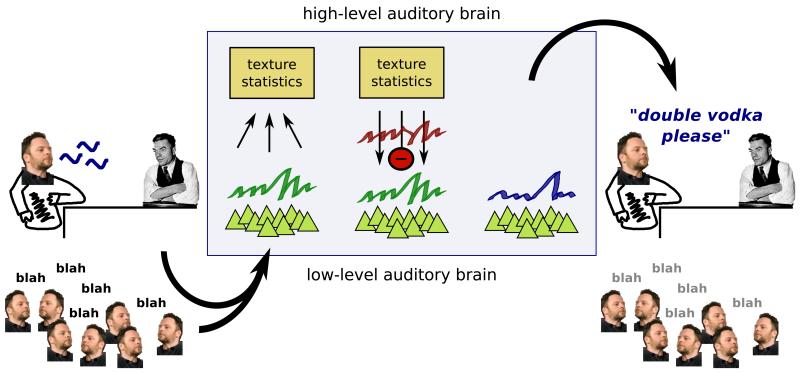Figure 2.
The classification of sound textures by their statistics may assist in auditory scene analysis. Sound from a complex scene enters the brain, and is represented by the activity of a population of low-level neurons (triangles). The higher-level brain captures the statistics of the low-level activity, hypothesizing that it consists of a stationary background sound texture, whose statistics are collected, and a foreground non-stationary sound. The background could then be subtracted to improve the perception of the foreground sound.

